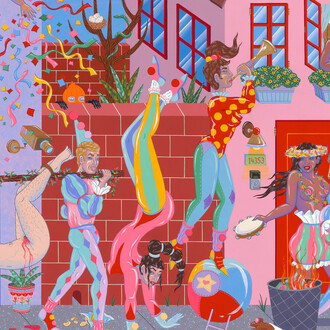The American Dream has become the ethos of the United States. For the Latinx community it means hope, a vision, an opportunity, and a faraway reality desired by numerous individuals south of the Mexico/U.S. border. Con dent in a better future, certain of the prospect of upward mobility, and yearning for sustainability, countless Latinx determined to create a better life for their children migrate north every day.
South of the border, dreamlike accounts are told of a fascinating land just north of the boundary that divides Latin America from their northern neighbors, where prosperity awaits for those brave enough to seek it, and courageous enough to make it theirs. Thus in hopes of a broken reality, millions of individuals every day continue to leave their home behind.
A nostalgic depiction of a post memory imaginary lies at the core of Latinx labor. The Latinx community thrives in spite of lacking basic access to the “pursuit of happiness,” as self-determination sustains millions of dreams in a land where “all men are created equal” (Declaration of Independence).
Antonio Pelayo and Isaac Pelayo collide various depictions of the experiences of the members of their own people: utilizing their artwork as a platform to visually convey the realities of Latinx community. Within the body of work featured in “The American Dream” street vendors and children are juxtaposed confronting memories past and realities present. These portraits serve as a glimpse into the actuality of The American Dream. Father and son thus utilize their aesthetic agency to give voice to the voiceless.
















